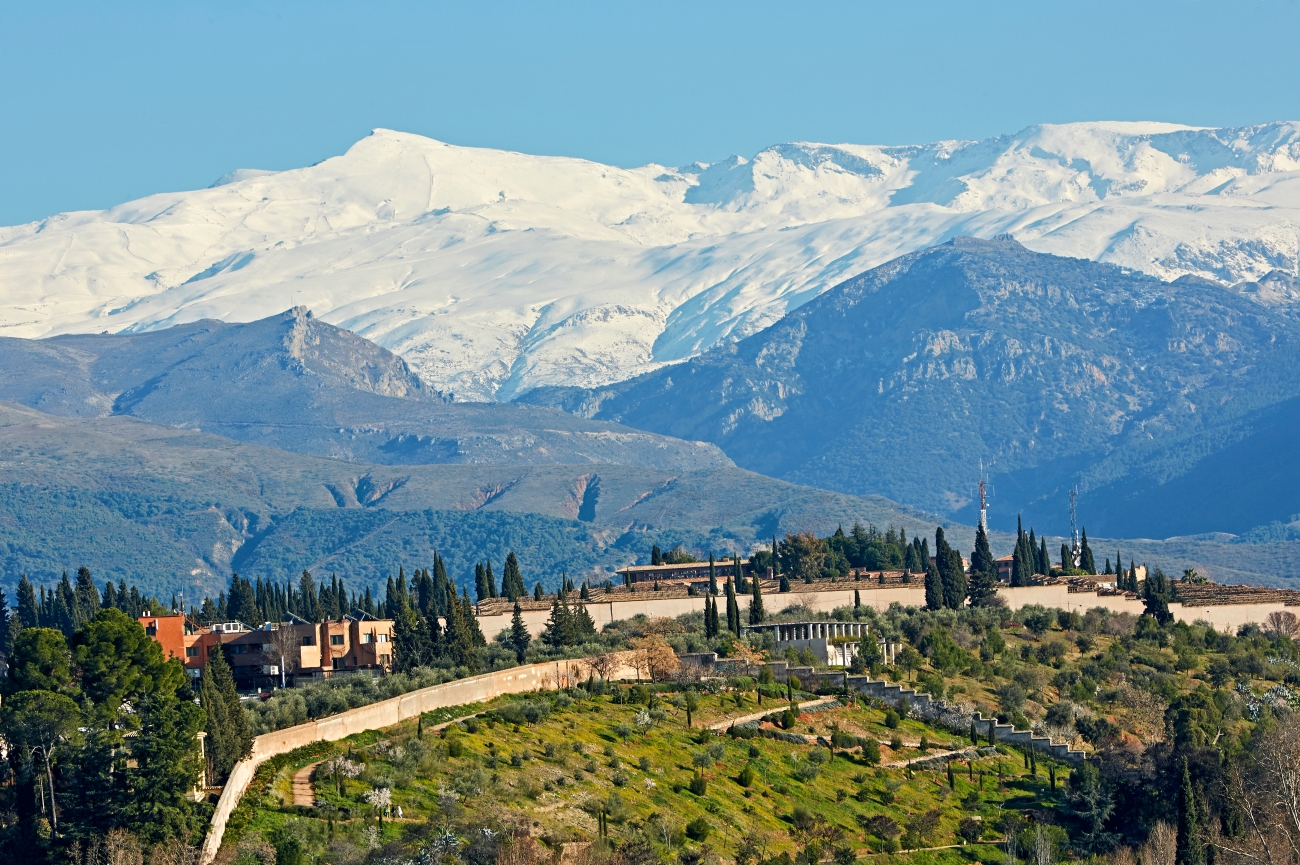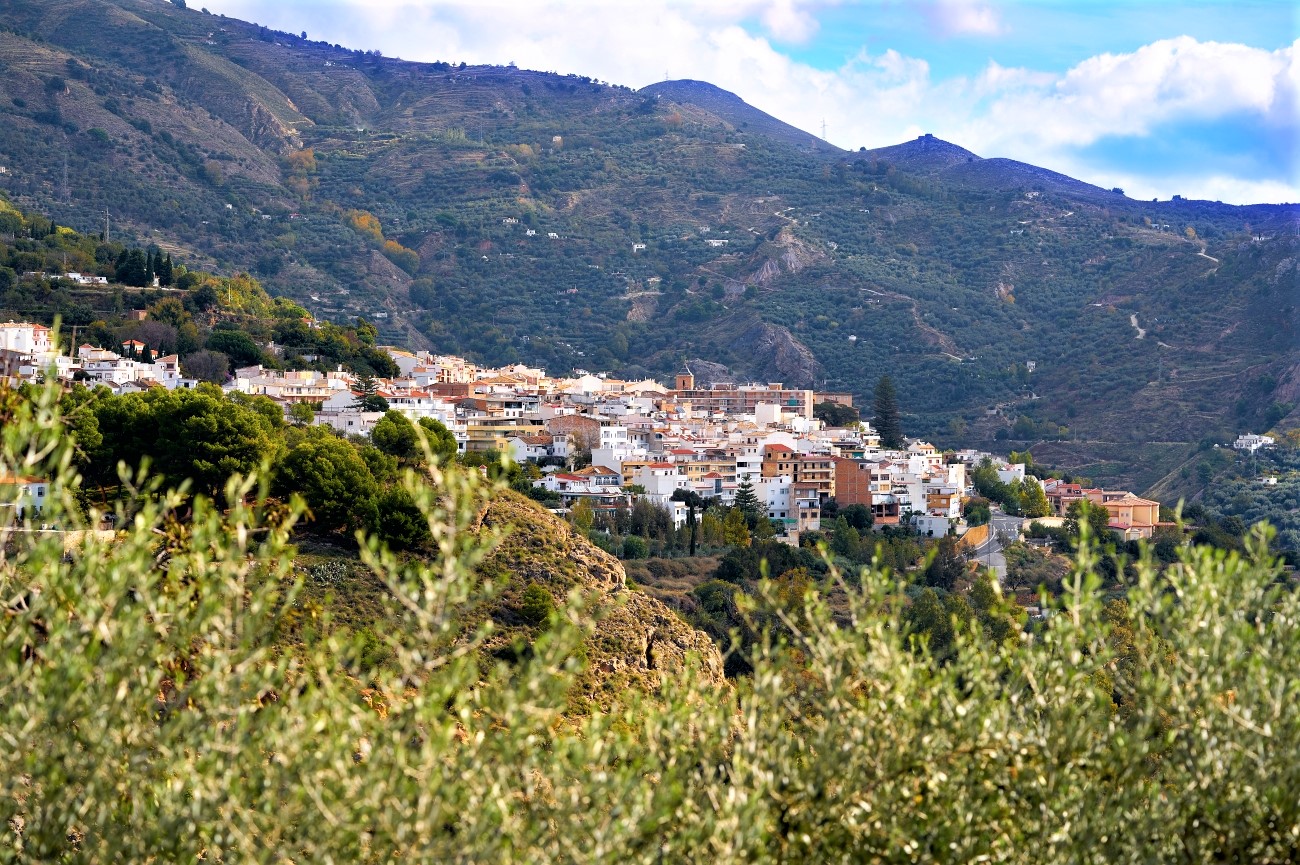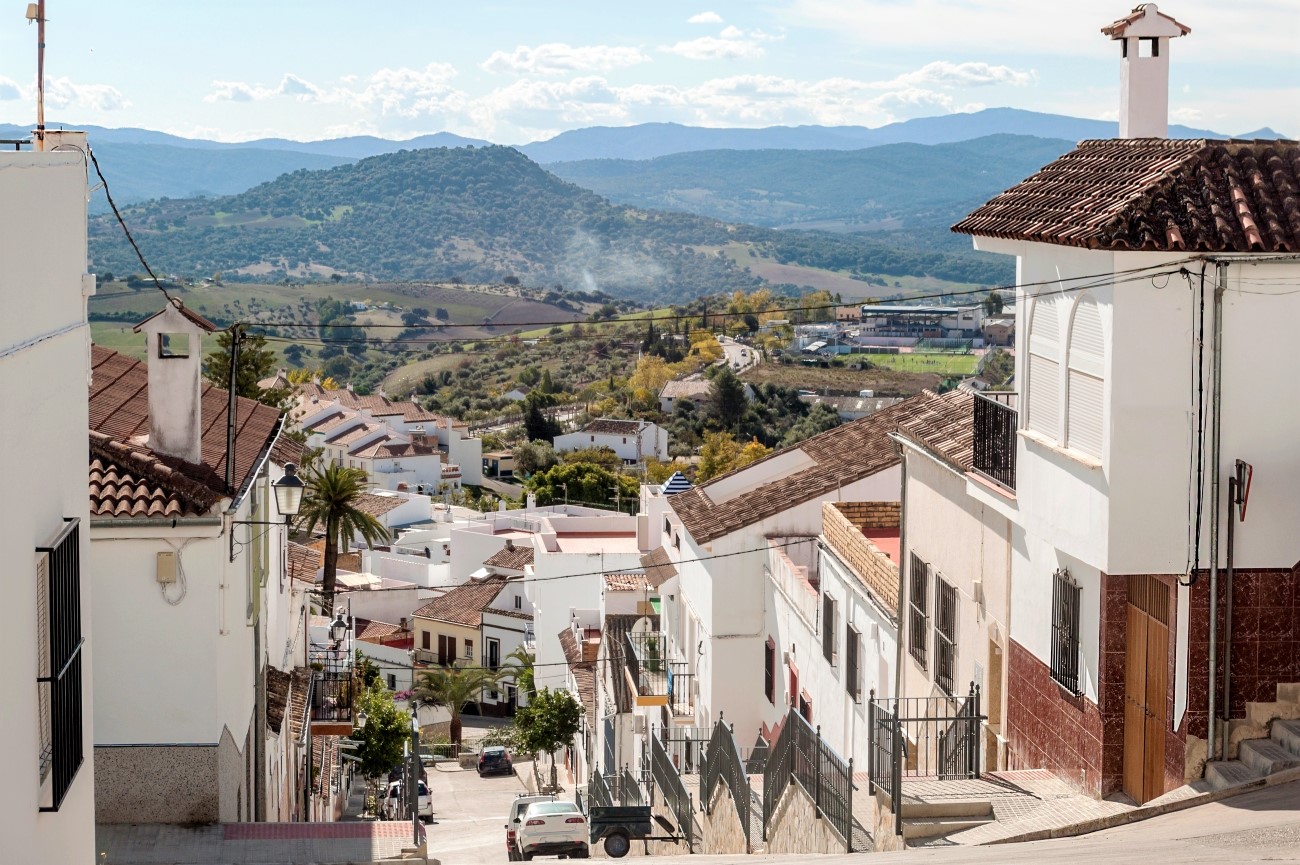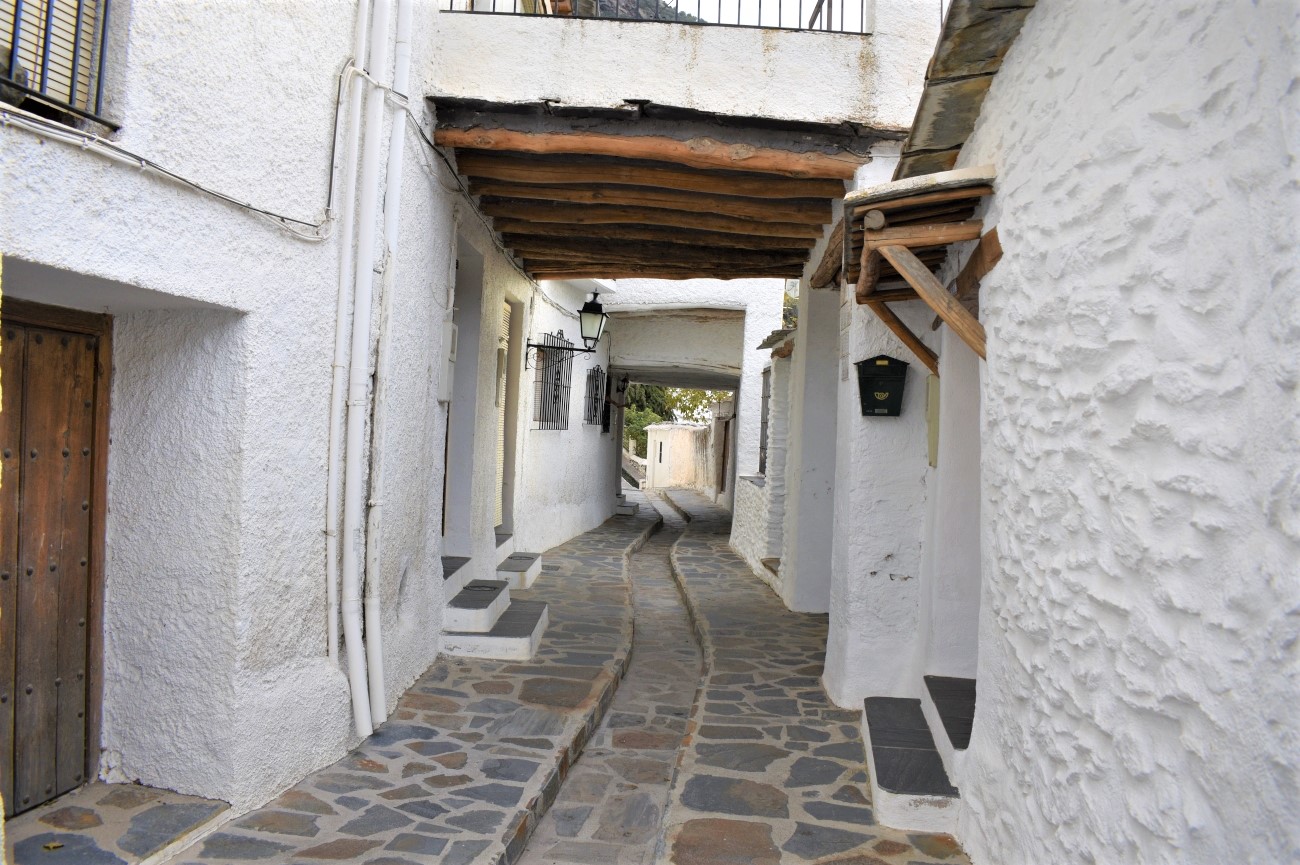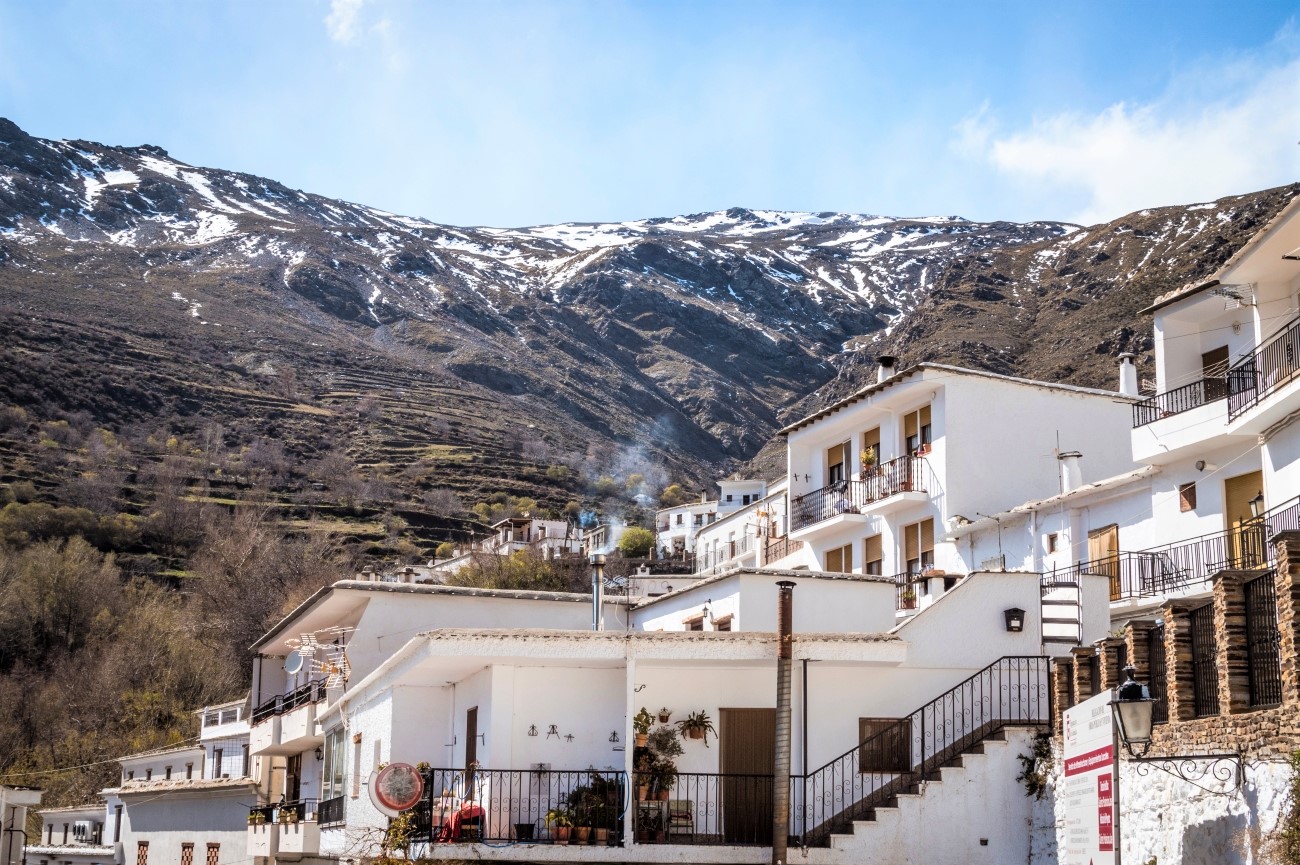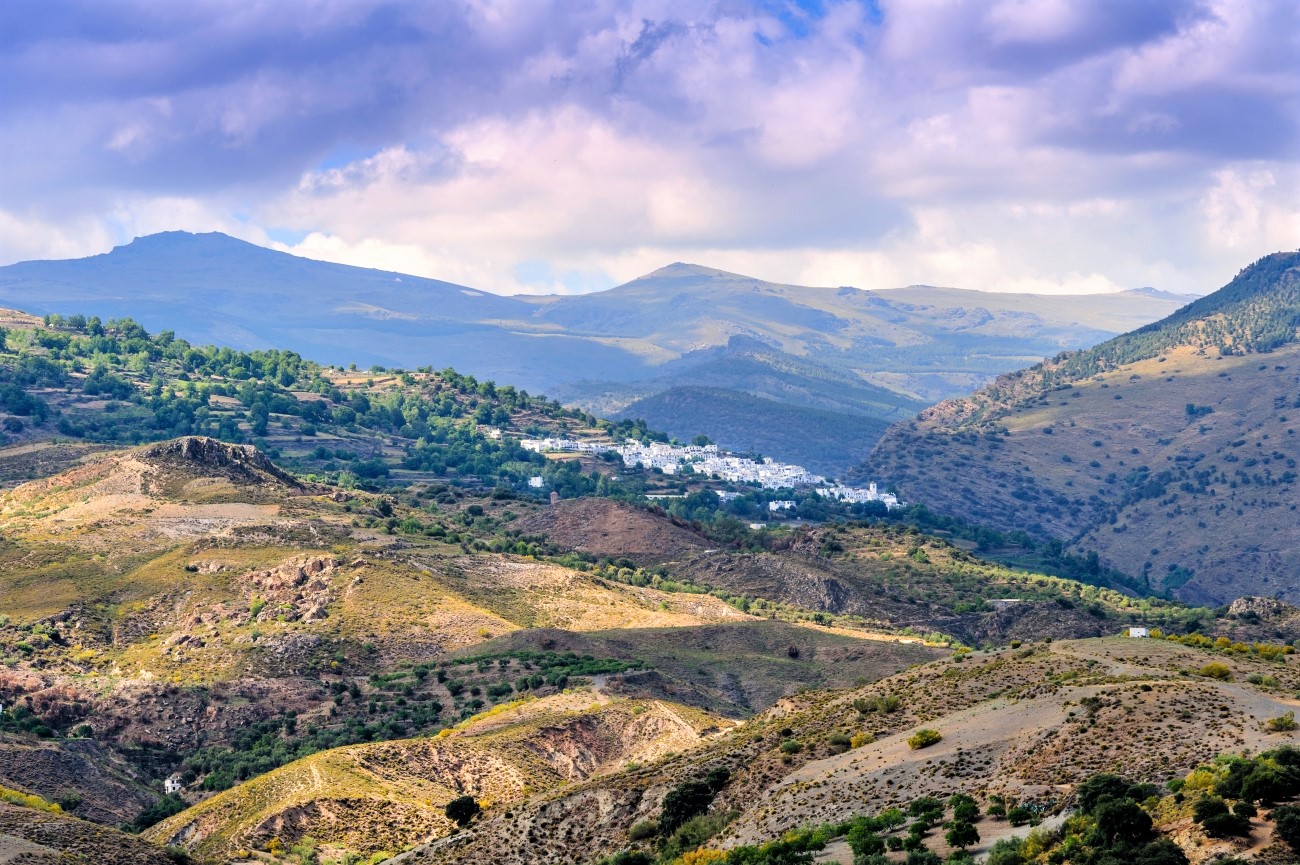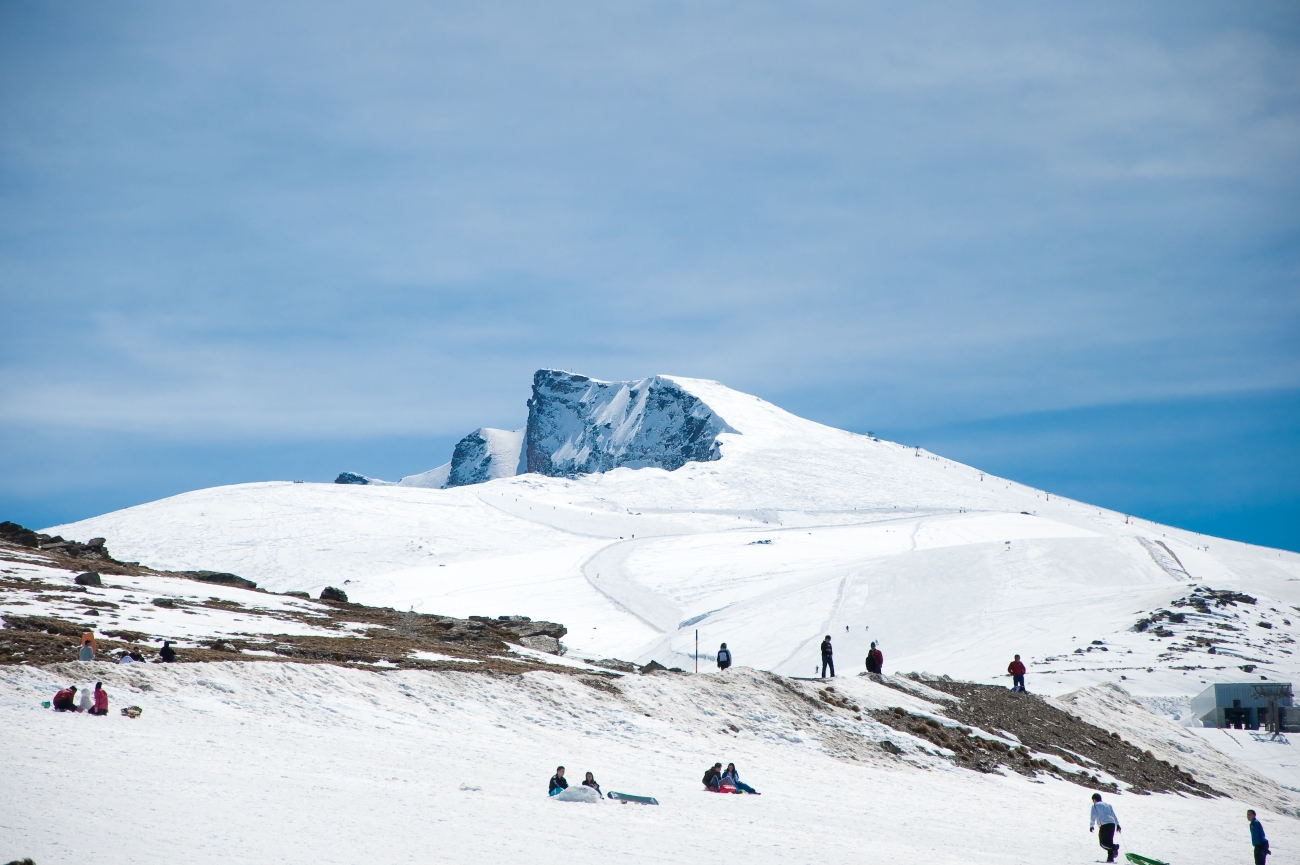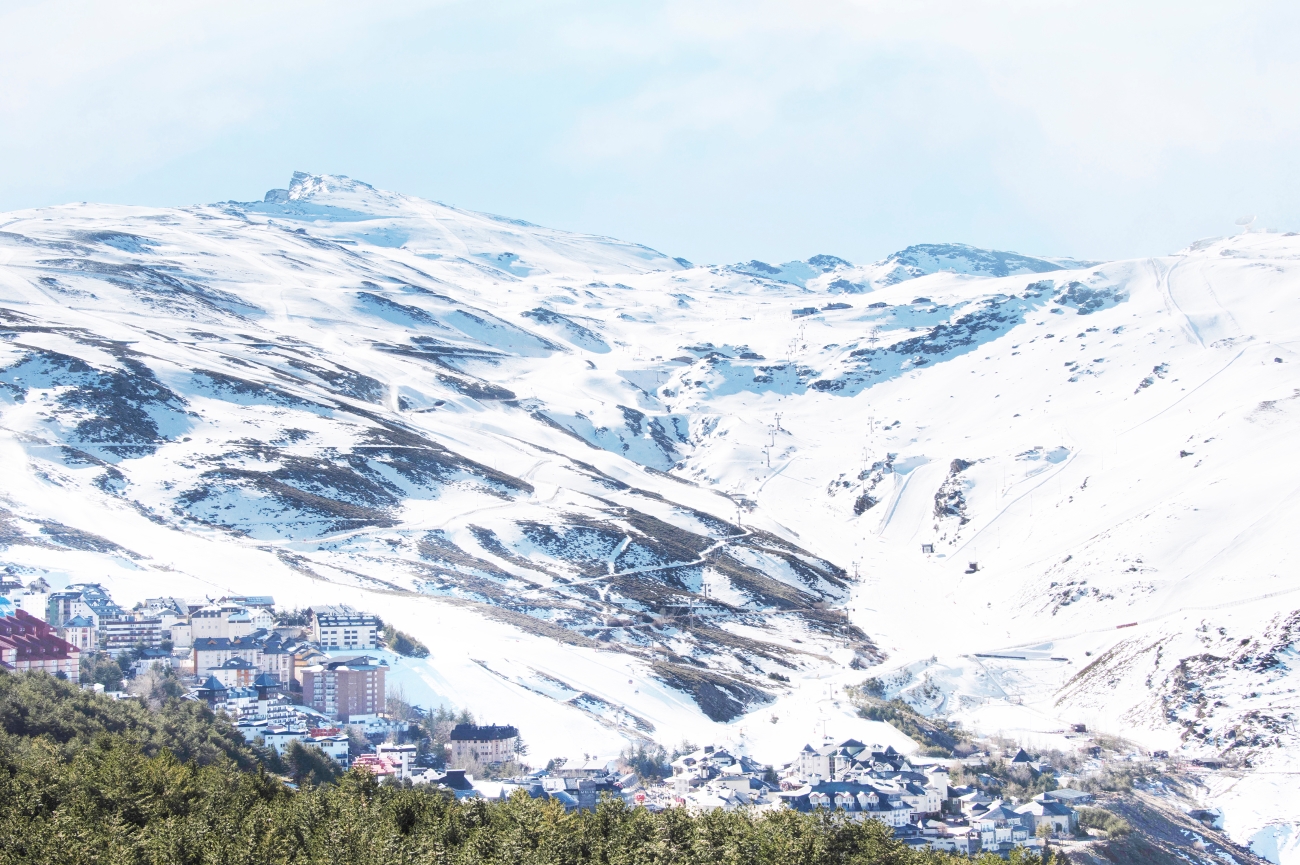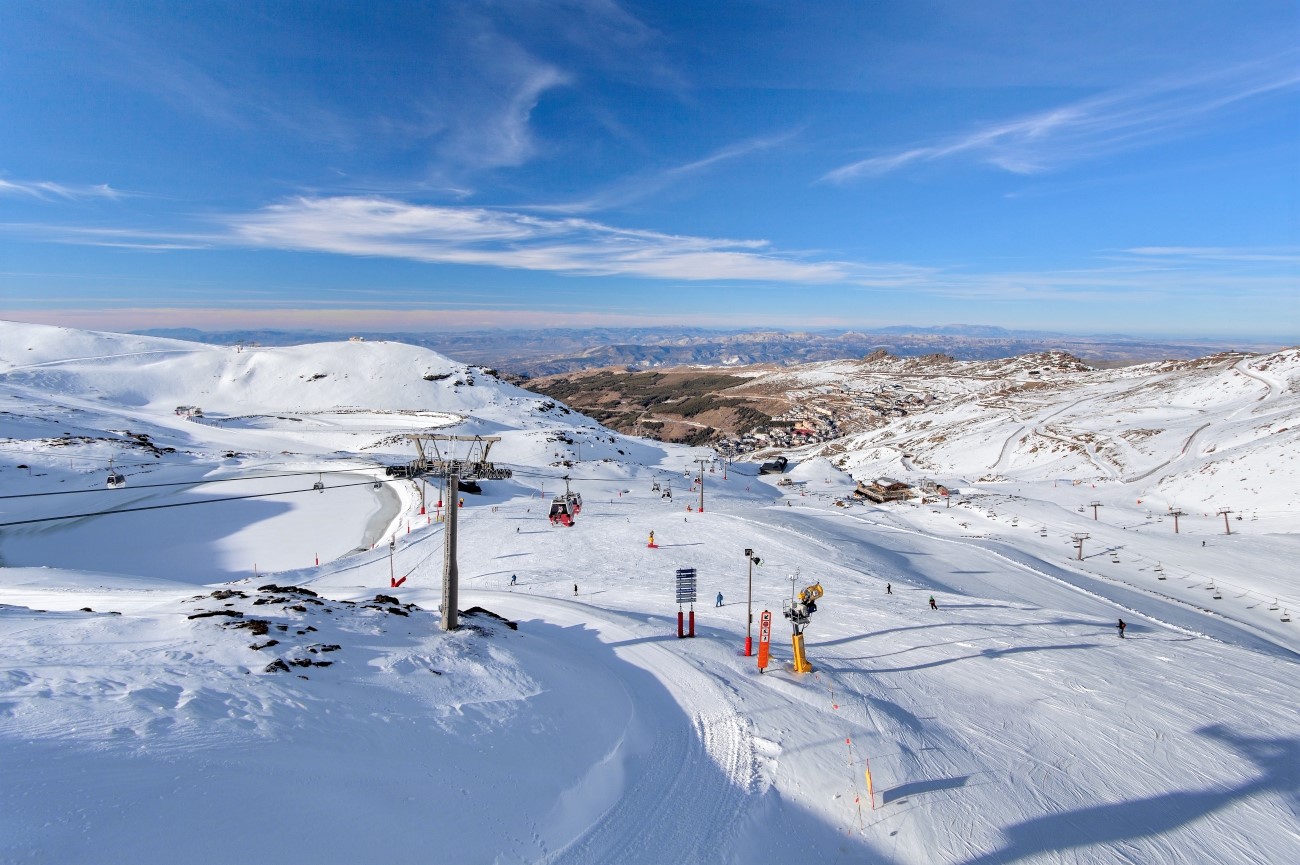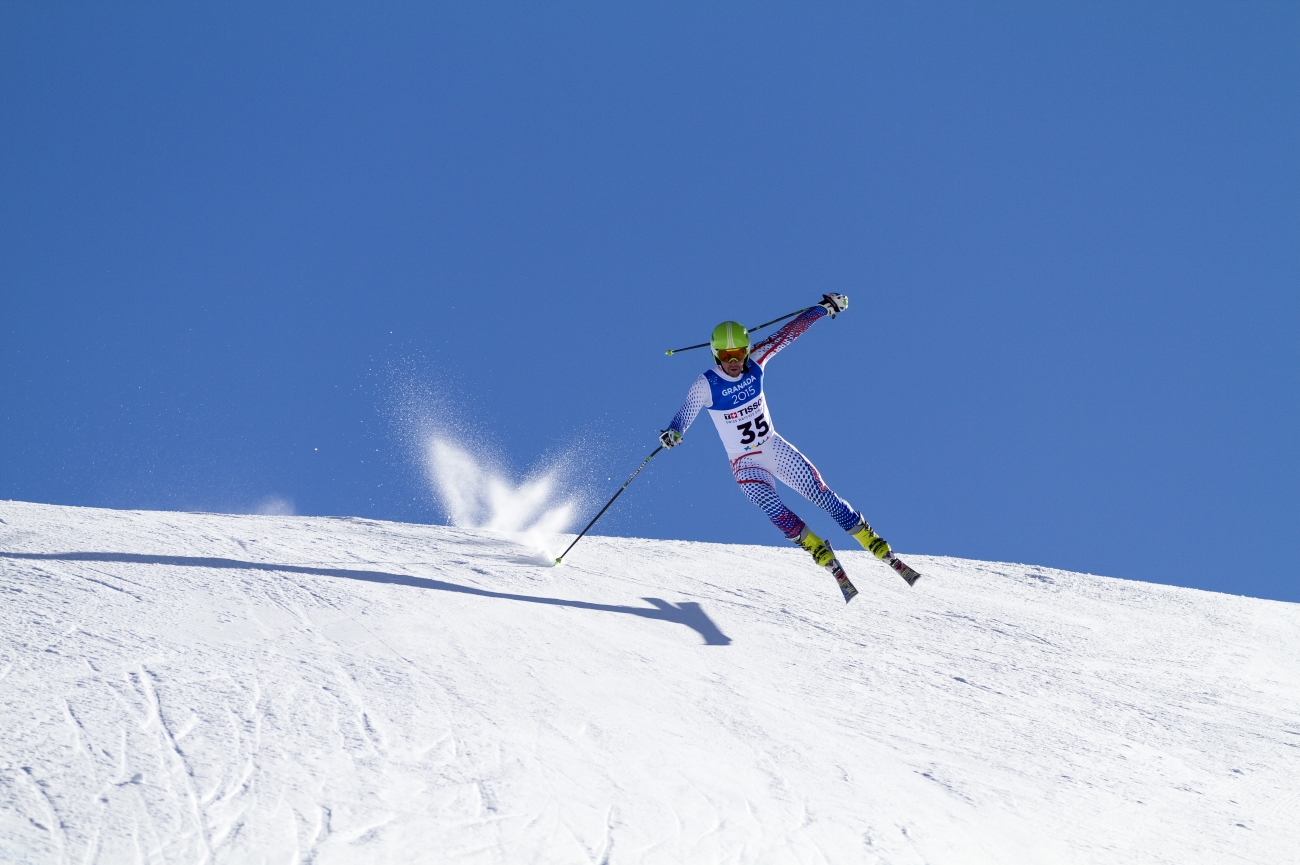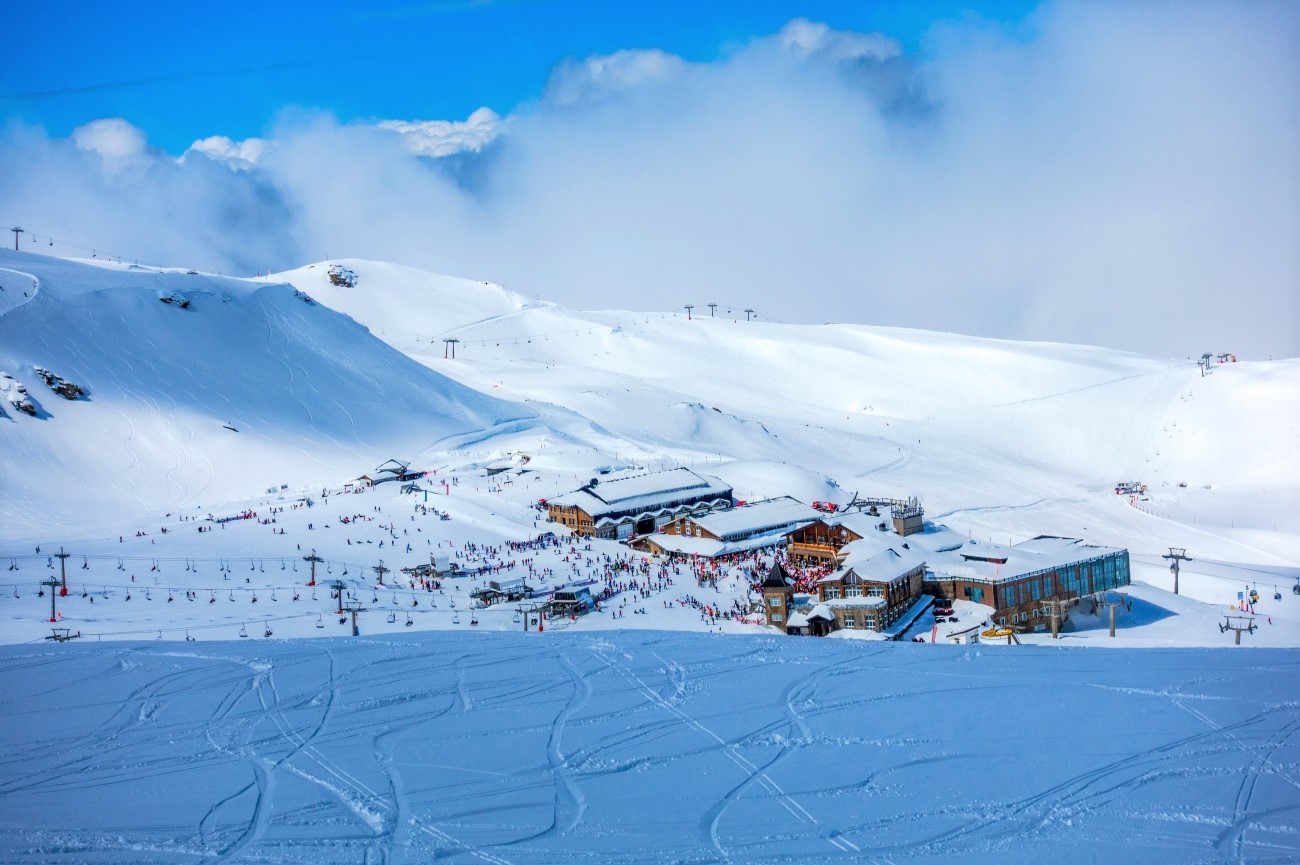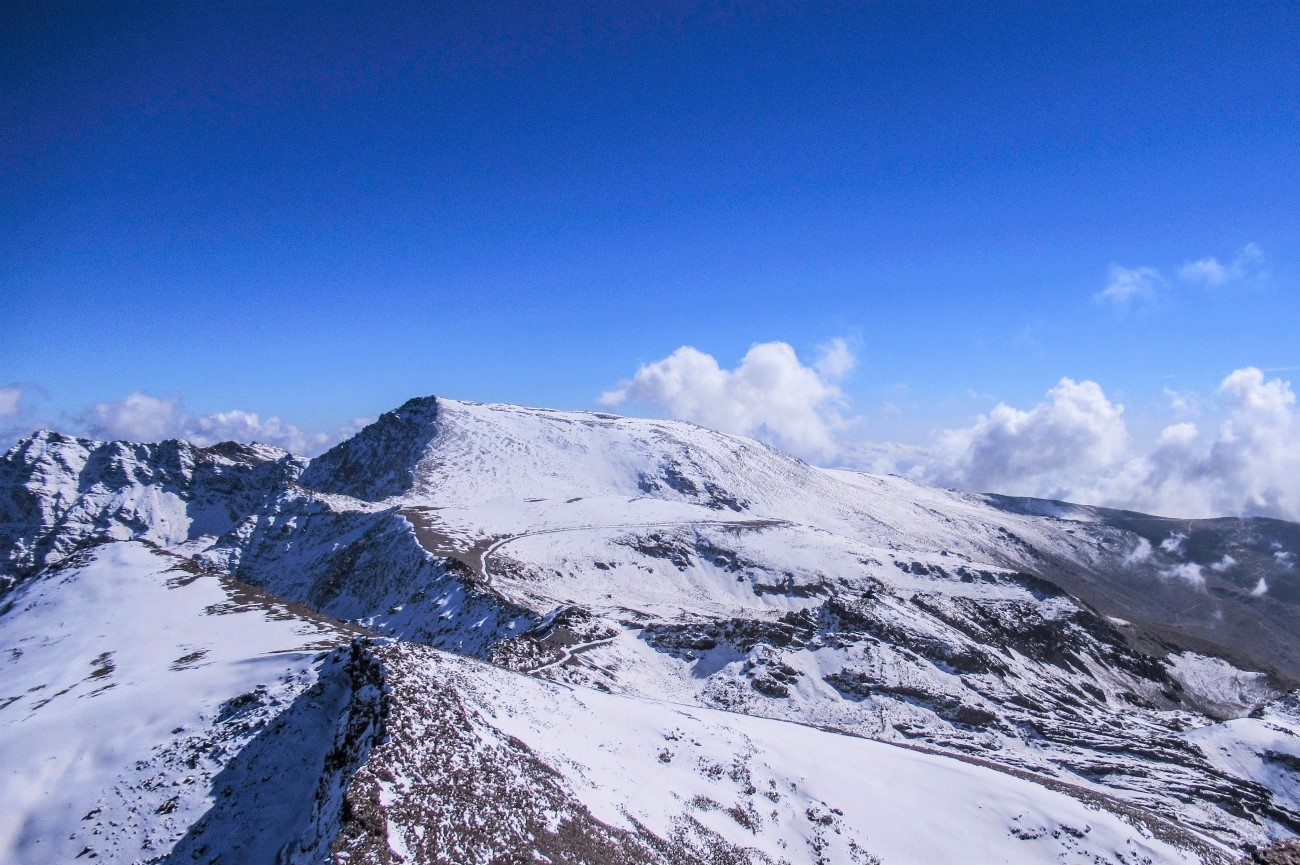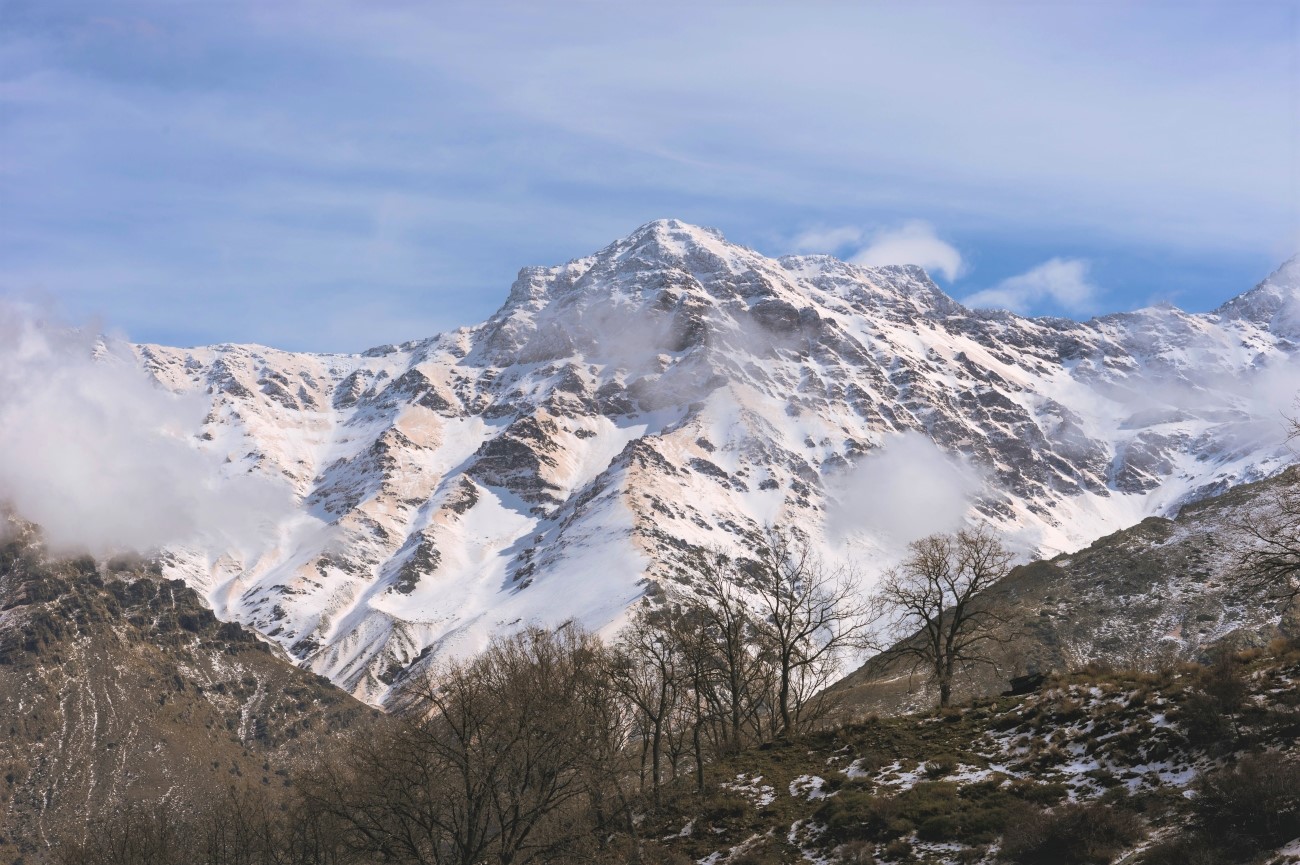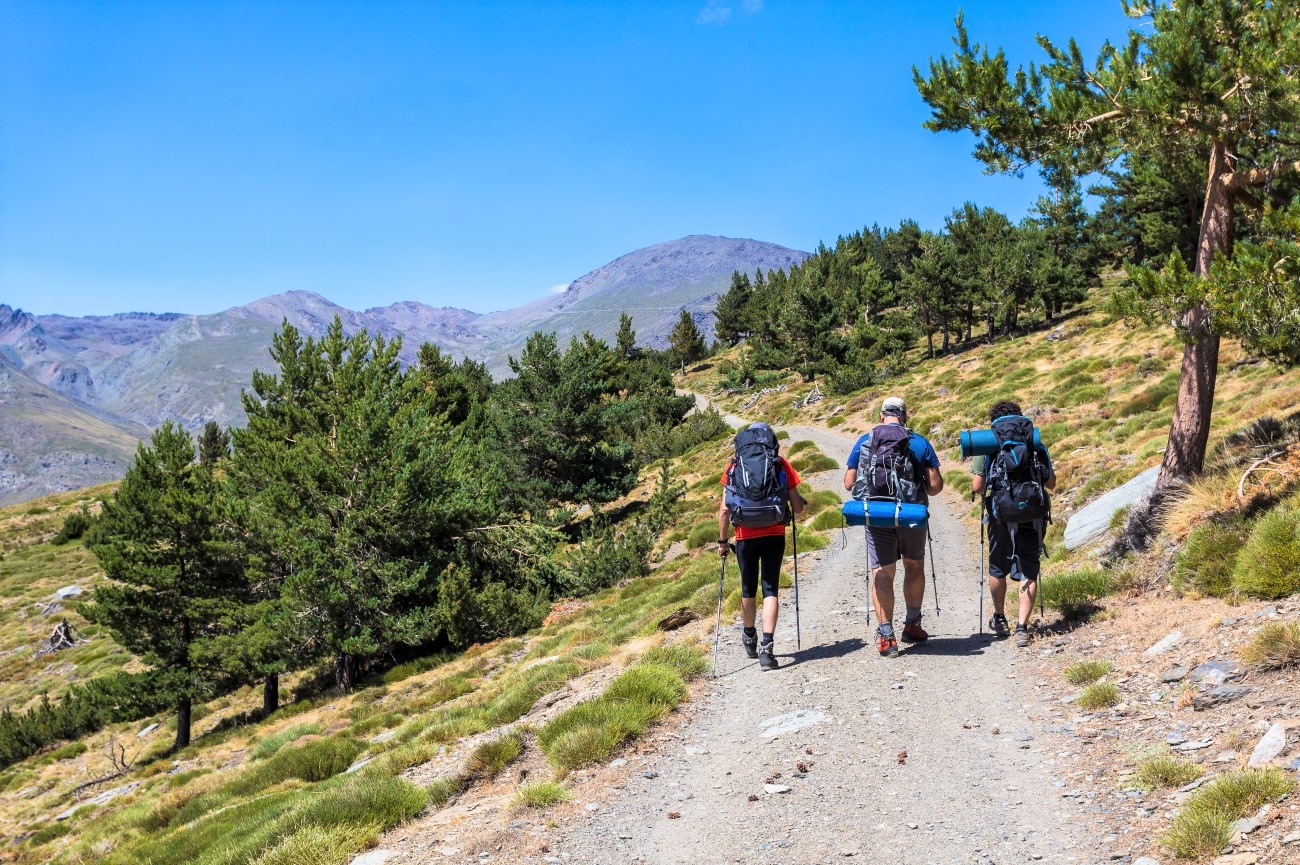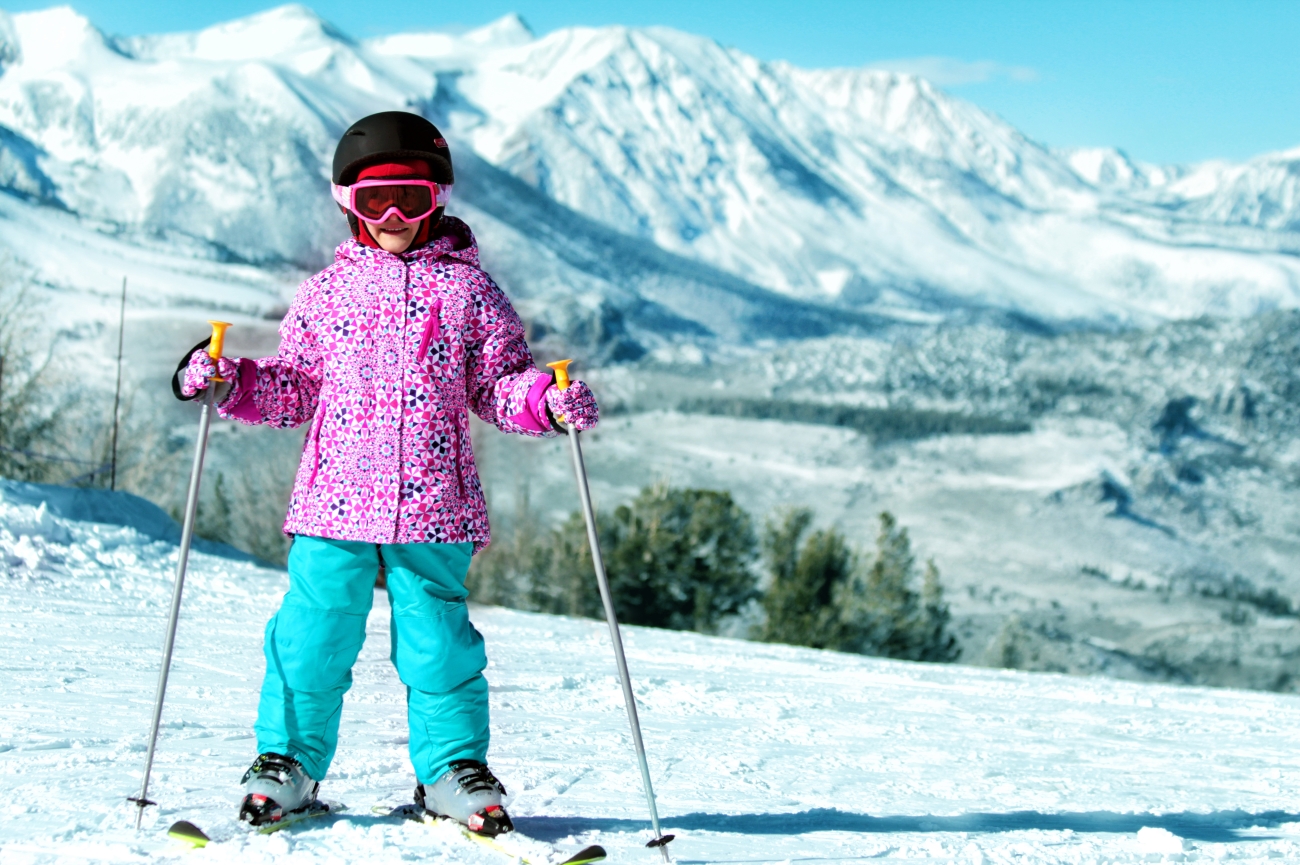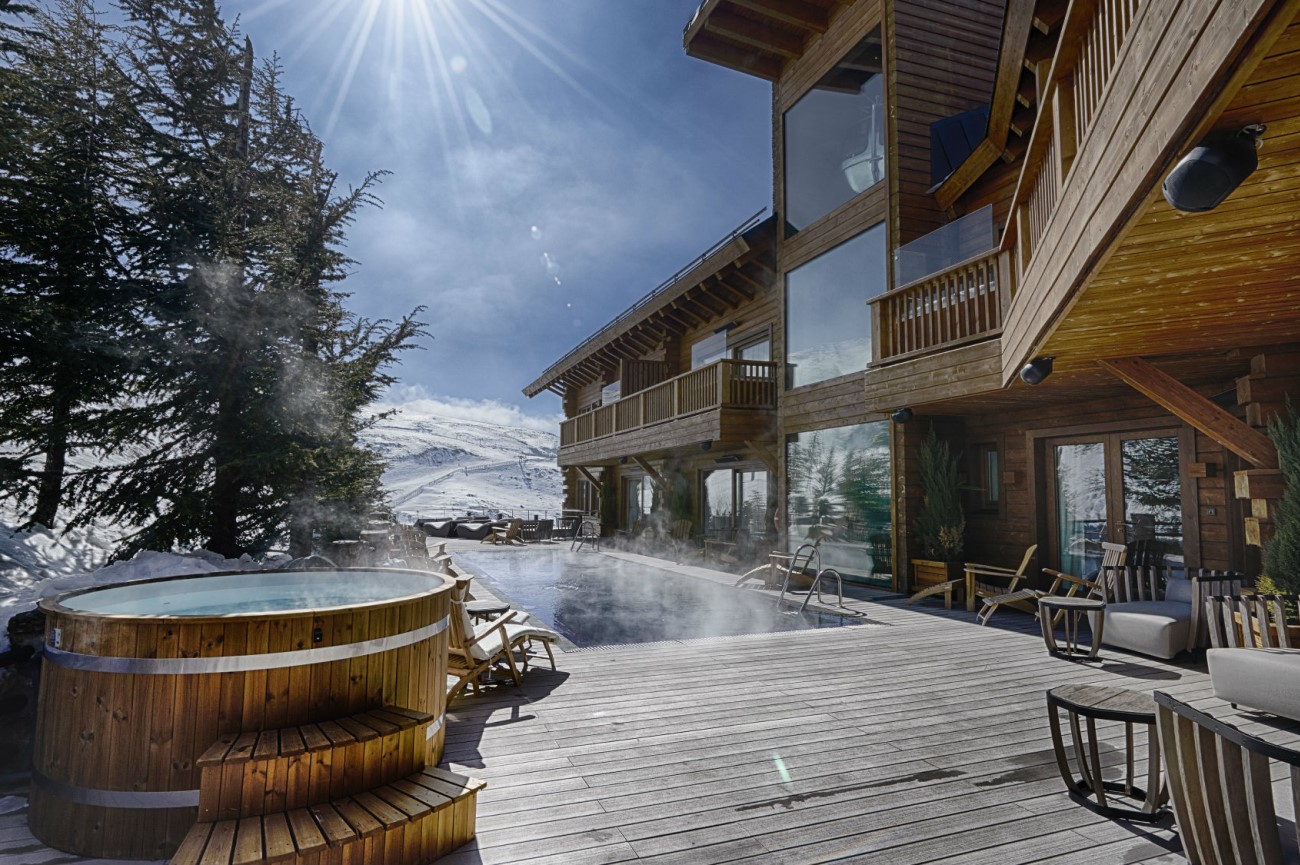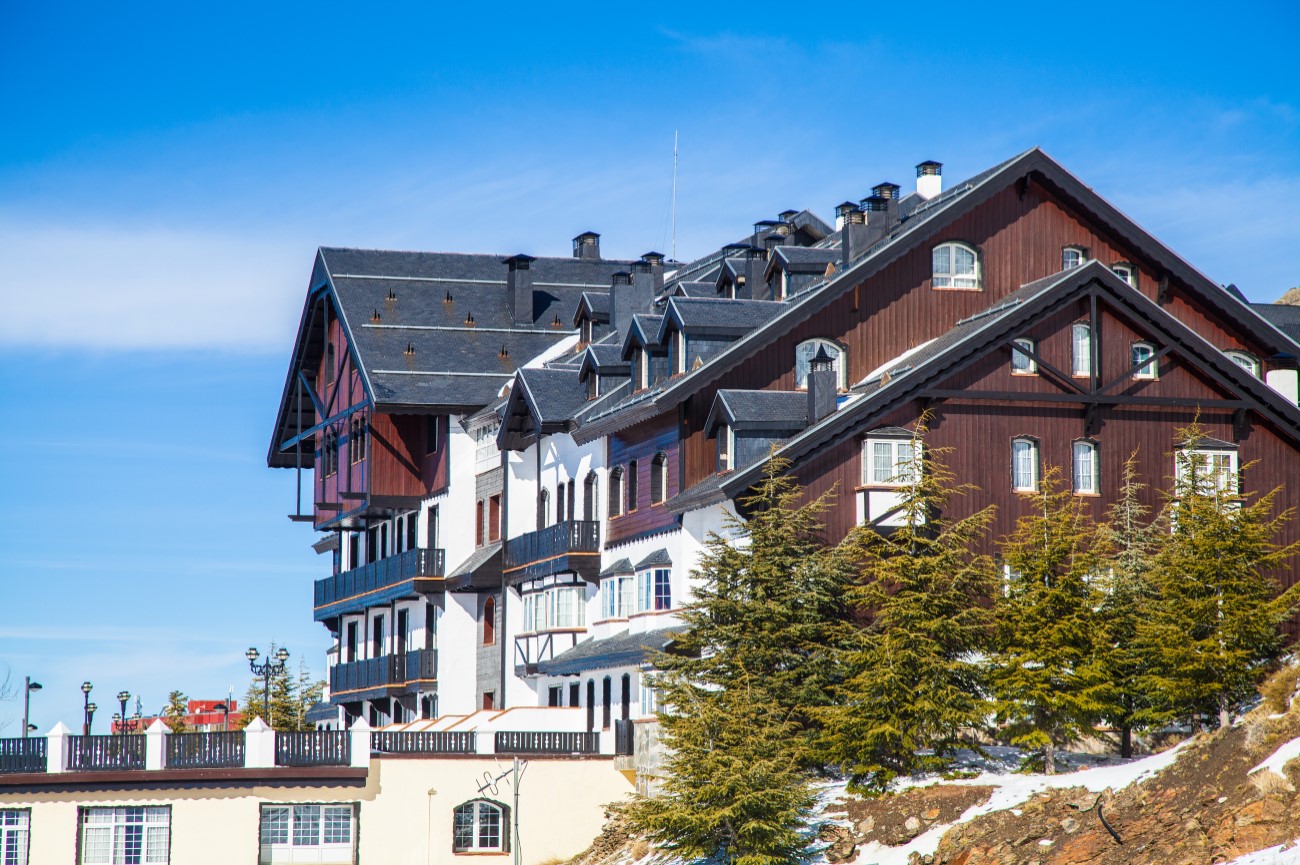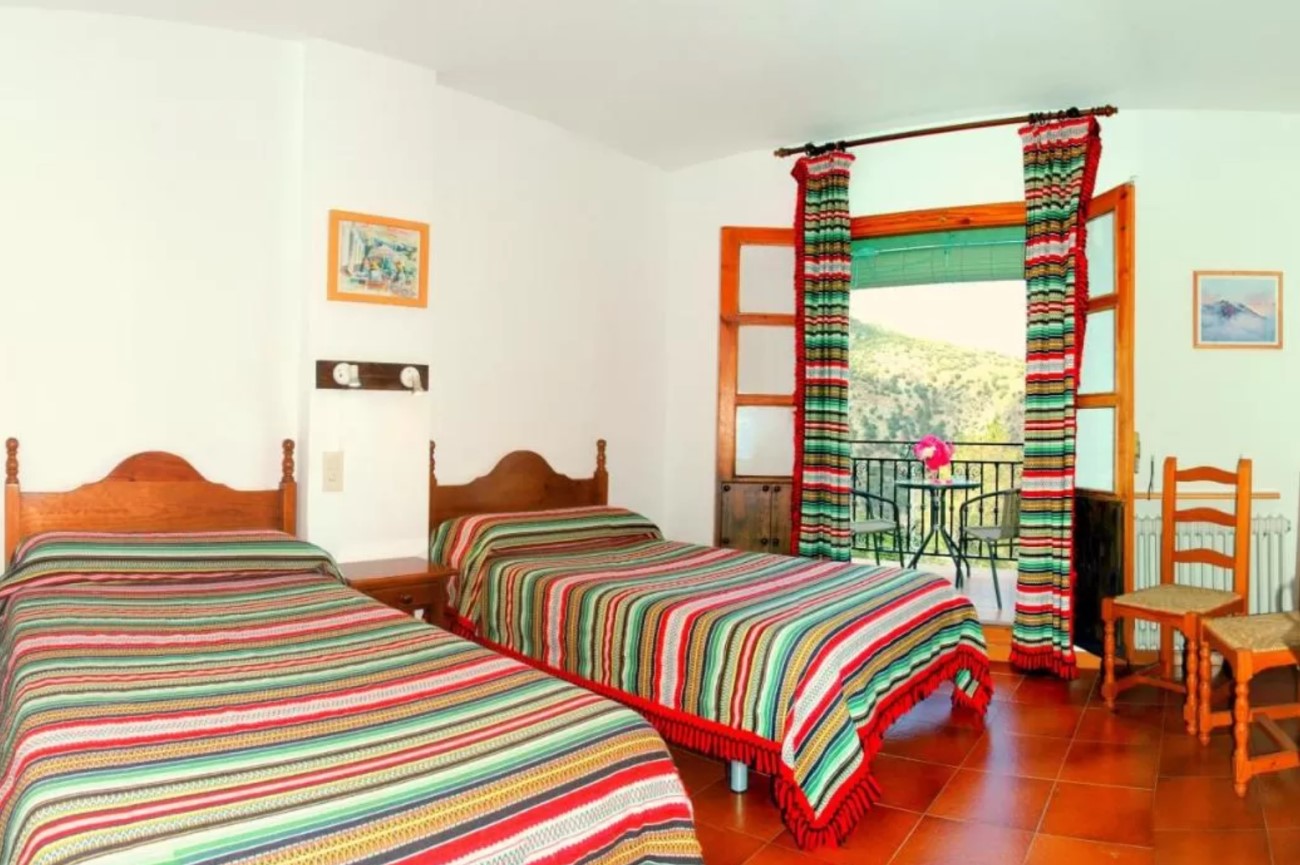Sierra Nevada Guide
The mountain range of Sierra Nevada appears just behind the city of Granada. It has the largest natural park in Spain, renowned for its icy slopes and remote villages.
From November to May, Spaniards and tourists head here to ski and practice other winter sports like snowboarding. Those visiting outside of the ski season can still enjoy the scenery by taking a hike or exploring Las Alpujarras region with its charming Pueblo Blancos (whitewashed towns). Rivers, deep gorges and glacial lakes are some of the natural elements you'll encounter in this protected landscape, as well as several animal species like the Ibex.
This Sierra Nevada guide has everything you need to know about the region. It includes information about the ski season, villages worth visiting, plus restaurants and hotel recommendations.
The White Villages Of Sierra Nevada
On the foothills of the Sierra Nevada between deep gorges, lies Las Alpujarras, a region scattered with whitewashed villages of Moorish roots. These feature quiet pedestrian streets, nature trails and small churches, once used as mosques. Capileira, Bubión and Pampaneira are some of the most stunning settlements, but there are many more worth discovering. Below is a suggested itinerary for exploring Las Alpujarras.
Lanjarón
Lanjarón is one of the first white villages you’ll find on the west edge of the Sierra Nevada. It’s famous for its natural spring, which supplies mineral water to the country, and its thermal baths. For centuries, visitors have come here to enjoy the water’s healing properties. The town’s spa, Balneario de Lanjarón, offers a variety of treatments including massages, thermal baths and steam rooms. The property also works like a hotel, providing accommodation to anyone that wants to settle here for a few days. Standing above the village are the ruins of a Moorish castle, which offers splendid views over the surrounding mountains.
Órgiva
A few miles south from Lanjarón is Órgiva, the largest town of Las Alpujarras. It stands amid a valley near the Guadalfeo river, surrounded by olive groves and citrus trees. The serene setting, along with the gorgeous mountain views are some of the reasons why people head here. Between the whitewashed houses, a 16th-century church stands out with its tall spires. Inside, you’ll find a sculpture of Christ attributed to the Spanish artist Juan Martínez Montañés. Another noteworthy building is the Palacio de los Condes de Sástago, an aristocratic palace that was once home to the Captain Don Gonzalo Fernández of Córdoba. These days the town is mostly famous for its bohemian atmosphere, with cosy cafés dotted around the church.
Pampaneira
Around three hundred people live in Pampaneira. It’s a typical Moorish settlement nestled amid the Poqueira valley, alongside the towns of Bubión and Capileira. These three towns are a bit more touristy than the rest, but it’s still worth wandering through its narrow streets and dining at one of its tapas bars. Pampaneira has the lowest elevation, at 1,000 metres. In the middle of the village is the Iglesia de la Santa Cruz, a 16th-century church decorated with wooden ceilings and gilded altarpieces. Further from the centre is the Buddhist Monastery O Sel Ling, which fits perfectly in this remote setting.
Bubión
This quiet village sits halfway between Pampaneira and Capileira in the Poqueira valley. The town’s whitewashed houses contrast against the rolling hills of the Sierra Nevada. As you drive through here, it’s hard not to stop and relish the panoramic views at every turn. Bubión is home to a couple of craft shops and a small folk museum, Casa Alpujarreña. It’s also a popular starting point for hikes and horseback riding.
Capileira
Deep between the mountains, you’ll find the village of Capileira. Its houses are white and so close together that they almost look like snow from afar. Freshwater springs run through the village, and nearly every street offers spectacular views of the rugged landscape. Like most villages in the area, Capileira was under Moorish rule until the Christians conquered it around the 16th century. It was the Catholic Monarchs that erected the Iglesia de Santa María la Mayor, replacing the former mosque. To learn more about the village’s cultural heritage, you can visit the Museo Etnológico. Many nature trails start here, taking you around the valley or up to the mountains.
Trevélez
Further east is Trevélez, a small mountain village set above a river valley. At 1,476 metres, it’s one of the highest villages in mainland Spain. Around 800 people live here, with houses settled between three neighbourhoods known as bajo, medio and alto. Of these three, the Barrio Bajo is the most popular among tourists thanks to its collection of boutique shops, hotels and restaurants. The dry air here is ideal for curing hams, and some of the best jamon in Spain comes from Trevélez. Before you leave, make sure to sample a plate of it with a cold beer. The village is also a good starting point for those looking to tackle Mulhacén, the highest peak in the Sierra Nevada.
Bérchules
The last stop on our Alpujarras tour is Bérchules. This picturesque village stands on a hillside featuring dramatic views over the Guadalfeo river and the Sierra Nevada. The name comes from the Arabic word “vergel” which means pasture, and you can still see cattle grazing on its lush meadows today. The surrounding countryside also includes many fruit trees with cherry, apples and peaches, as wells as fields of tomatoes and berries. For a scenic walk, take the path across the mulberry trees towards the old Moorish arch. If you’re feeling a bit more adventurous, there are also biking and horseback riding activities.
Sierra Nevada Tour Map
Skiing In Sierra Nevada, Spain
You’ll find Sierra Nevada’s ski area, Pradollano, along the slopes of the Veleta peak, 30 minutes away from Granada. It’s the most southerly ski resort in Europe, attracting visitors with its sunny days and mild weather since 1964.
There are over a hundred kilometres of
tracks here divided by 124 runs for all ski levels. Green runs are best
for beginners, and black runs are rated as “very difficult”. In between,
there are also the “easy” blue runs and the “difficult” red runs.
Compared to the Alps, the resort in the Sierra Nevada is much smaller, but it’s renowned for its high-altitude skiing, with 3,300 metres at the highest slope. It also welcomes regular ski and snowboarding events, like Snowboarding World Championships or the Freestyle Ski.
Other activities available in the area include cross-country skiing and paraskiing, which combines skiing with paragliding.
Sierra Nevada Ski Season
Thanks to its high altitude, Sierra Nevada has a longer ski season than most resorts in Spain. It usually starts in late November and lasts until early May or June, depending on how much it snows.
There are three types of seasons on the ski calendar: promotion, low and high, and the prices will vary according to this. You can check the updated season calendar here.
Sierra Nevada Ski Passes
You can choose several types of ski passes in the Sierra Nevada: long term, consecutive, non-consecutive and family passes.
For consecutive days, ski passes are free for children under 6, children with disabilities (6-12) and people over 70. You only need to pay around 5 euros for insurance.
The cost of a ski pass will depend on the season and your age. At the moment, there are three categories: children (6-15), adults (16-59) and seniors (60-69). People with disabilities have a discount of around 33% or more. A day-pass for an adult on low season costs around €50 and €52 during high season, children passes €33 and €34 respectively and seniors €40 and €41.
Long term ski passes are available for people who have the Sierra Nevada Club Card. These can be seasonal (worth it if you’re skiing at least 30 days in a season) or non-consecutive (ranging between 10 to 25 days).
There are two places where you can purchase your passes, at the main office in Pradollano or near the Parking Peñones. To save time, you can also book your pass in advance on the website. You’ll have to queue up to pick it up the first time, but then you can usually recharge it online.
Notes: Once you have your pass, you’re free to ski. We recommend heading to the slopes early in the morning around 9 a.m. to park your car. Make sure to check the weather before you head out. If there are strong winds, the high slopes might be close, which means the lower ones will be quite busy.
Sierra Nevada Ski Rental
There are two rental shops close to the resort, one in Pradollano and another in Borreguiles. Both rent a variety of materials including skis, helmets and boots for about €25 a day. You can rent your equipment when you get here or reserve it in advance online.
Other ski shops nearby include Adventure & Ski, Rio Sport, Iliberis Sport and Monitor Tecno.
If you’re coming from Granada, it might be cheaper to rent your equipment in the city before heading to the Sierra Nevada.
Sierra Nevada Ski Schools
There are more than a dozen ski schools in the Sierra Nevada. These offer a variety of lesson formats, from group sessions to individual classes for kids and adults. Lessons are available in Spanish, English, French or German.
The best ski schools in the area are Deslizando, the British Ski Center, Swedish Ski School, English Ski, Escuela Española and the Escuela Oficial, which has been running since 1986. You can check the average school rates here.
Night Skiing
For a unique experience in the Sierra Nevada, you can book a night skiing session. When the sun sets, the runs at the Maribel and El Rio slopes are illuminated all the way down. These night sessions happen once or twice a week, on Thursdays and Saturdays, between 7:30 p.m. and 10:00 p.m. The last ski lift is at 10:00 p.m., but schedules might change depending on the weather. You can buy night skiing passes at the ticket office or online.
Snowboarding In The Sierra Nevada
Beyond skiing, the mountains of Sierra Nevada are also an ideal spot for snowboarding. The Superpark Sulayr is home to the largest halfpipe in Spain, six metres high and 165 metres long. There are also slopes for freeriding which include pipes and jumps, suitable for medium and advanced levels. Beginners can enjoy the piste near the Borreguiles resort.
Hiking And Cycling In The Sierra Nevada
Scattered across the Sierra Nevada are a series of hiking trails for
all levels. The mountainous landscape is home to over 2,000 plant
species, many of which you can admire along the way. With a bit of luck,
you can also spot some of the local fauna, like the Spanish Ibex, wild
boar or badgers. Below are some of the best hikes in the Sierra Nevada:
- Mulhacén: Also known as the Roof of Spain, Mulhacén is the highest peak in the Sierra Nevada at 3,479 metres high. It’s possible to hike here in a day from the villages of Capileira or Trevélez in the south, or from Hoya de la Mora on the other side of the mountain. The journey will take around six to seven hours. You can also take it slow and plan some stops along the way.
- Veleta: A bit lower at 3,396-metres is the Veleta peak, which visitors can spot from Granada. The trail begins at Hoya de la Mora, and it takes about two hours to reach the peak. On the northern side of Veleta, you’ll find Sierra Nevada’s ski resort.
- Alcazaba: This peak is smaller than Mulhacén and Veleta, but the trail can be a bit more challenging. It’s a 20km trek over rough terrain, crossing through some of the most isolated areas in the Sierra Nevada. The path starts at the Alto del Chorrillo, near Capileira, and if you need a break, you can split the hike in two, stopping at Refugio Poqueira for the night.
Other famous trails include the Beas de Granada hike, Los Cahorros hike and the Trevenque hike. The Cumbres Verdes area is ideal for mountain biking, while adventurous cyclists can follow the trail to Veleta, which has the highest paved road in Europe.
Note: If you’re walking or cycling in the Sierra Nevada on a sunny day, it’s worth putting on some sunscreen and sunglasses.
Top Things To Do With Kids In The Sierra Nevada
There are many activities for kids in the Sierra Nevada. At the ski resort, you’ll find a nursery and slopes catered for beginners. Kids under six can ski here for free. You can also book individual or group lessons in one of the park’s ski schools.
Beyond skiing, families will enjoy a visit to the Mirlo Blanco park in Pradollano. It’s an area dedicated to kids which includes an ice rink, toboggans, mini-snowboard, ski-bike and a fun bobsled ride.
If your kids are more into sledging, then you can visit Hoya de la Mora, the highest part of the ski resort, which offers splendid views of the mountains. It’s also worth exploring the Borreguiles area, where children can slide down the slopes on rubber rings or ride snowmobiles.
Where To Eat In The Sierra Nevada
Across the Sierra Nevada, there are a series of cafés and restaurants
offering delicious meals. Most of these places feature terraces with
panoramic views where you can relax after a day’s skiing. While
exploring the area, it’s worth trying some of the local cuisine. Some
famous dishes from this region include hearty stews like the Rabo de
Toro (oxtail stew), and meat dishes such as Carnes a la Plancha
(grilled meats), made with pork, lamb or beef. Whether you’re looking
for a quick snack or a hearty meal, here are some of the best places to
eat in the Sierra Nevada:
- Teteria Magick (Capileira): Set in Capileira, this coffee house has a terrace with incredible views over the Alpujarra region and the Poqueira valley. Head here for a warm cup of coffee or a tea in between ski sessions. The menu also includes tapas, wraps and crepes. Decorating the walls are a series of paintings, usually available to purchase.
- Restaurante Moraima (Capileira): Also
in Capileira, this rustic restaurant opens every day at 7 a.m.,
attracting early risers looking for breakfast. Beyond coffee and
tostada s, they also serve tapas and cold beers and offer a daily
menu for less than €12. If the sun is out, you can grab a seat on their
outdoor terrace.
- Café-Bar SkiBob (Pradollano): Housed inside a cosy
chalet, the Café Skibob is famous for its delicious homemade burgers and
tapas. Before or after hiking up to the Veleta peak, you can stop here
for a bite to eat.
- Asador Parque (Lanjarón): You’ll find this modern
restaurant in the village of Lanjarón. Like most restaurants in the
area, it offers an outside terrace ideal for those sunny days. Some of
the highlights on the menu include the solomillo de ternera a la brasa
(grilled beef steak) and the salmón al limón (salmon with lemon).
- La Fragua (Trevélez): Part of the Hotel La Fragua, this is one of the
best restaurants in the village of Trevélez. Grab a seat on their
terrace and enjoy the mountain views while tasting some regional dishes
like the Plato Aluparreño , a Spanish dish that combines jamón,
chorizo, blood sausage, fried eggs and potatoes.
- Asador El Lagar
(Pampaneira): If you’re heading to Pampaneira, you can enjoy a meal at
the Asador El Lagar. Tucked away in a little courtyard, this restaurant
is renowned for its large meal portions, so come hungry or bring a
friend to share.
Best Hotels In Sierra Nevada, Spain
There are several types of accommodation in the Sierra Nevada, from
budget-friendly hotels to cosy chalets and luxury resorts. You can stay
close to the slopes or a bit further in one of the Alpujarras villages.
Below are some of the best places to stay in the Sierra Nevada.
- El Lodge (5 stars): Located within the Sierra Nevada ski resort, this boutique hotel attracts visitors with its alpine-style atmosphere. The rooms have wooden interiors and large bright windows overlooking the mountains. There are four restaurants onsite, a heated outdoor pool, and a spa with an indoor pool, a sauna and a gym. The hotel has also partnered with a local ski school so you can book lessons here.
- Hotel Vincci Selección Rumaykiyya (5 stars): This is one of the highest hotels in Europe with direct access to the ski slopes. Besides having a ski-chair outside the door, the hotel also offers transport to the Pradollano area. The rooms are spacious, and most of them have private balconies. Facilities include a restaurant, a bar and a spa with an indoor pool and massage services. Guests can also rent ski and snowboarding equipment directly at the hotel’s store.
- Finca Los Llanos (3 stars): You’ll find this rural hotel in the heart of Capileira, at 1436 metres high. From its terrace, you can capture the Poqueira valley and the surrounding mountains. It has 44 rooms, spread between three buildings named after famous writers like Federico García Lorca. There’s an outdoor pool open seasonally and a restaurant that serves regional delicacies.
- Hotel Los Bérchules (2 stars): This family-run hotel gets its name from the village in which it stands. Guests can choose between single and double rooms or book an apartment which can take up to four people. Within the premises, you’ll also find a small library, a restaurant and an outdoor pool surrounded by trees.
- Refugios: If you’re planning to hike or cycle around the Sierra Nevada and need a break in between, you can stop at one of the local refuges. These are small properties in the mountains that offer bed and breakfast for around €30 a night. Those heading to Mulhacén can book a room at the Refugio Poqueira. Further north is the Refugio Postero Alto, an ideal spot to explore the area around the Dehesa Del Camarate forest.
Best Time To Visit The Sierra Nevada
Choosing the season to visit the Sierra Nevada will depend on what kind of activities you plan to do. Spring and early summer are ideal for hiking and cycling. May and June, especially, are the best months to conquer the park’s highest peaks, Veleta and Mulhacén. There will be less snow around this time, but it will be much easier to walk around the trails than in winter, and you get to see the stunning flora. The temperatures are also milder at this time, so it’s more comfortable to walk around.
Despite being high up in the mountains, the scorching heat typical of most Andalusian summers also reaches the Sierra Nevada, so the park is often off the cards for most of July and August. By September the temperatures start cooling down, reaching mid to low twenties. The skiers are yet to arrive, so you won’t see that many people around, while you explore the park. It’s a good time for one-to-multiple day hikes.
In November the ski season begins, lasting until May. The snow allows you to practice a variety of winter sports. Besides skiing, you can also do snowboarding and other activities like sledging.
How To Get From Granada To The Sierra Nevada
If you’re exploring the city of Granada, you can easily arrange a day trip to the Sierra Nevada. Most of the hiking trails are less than an hour away by car, but there are regular buses from the city to the park too. Some buses also go through the Alpujarra region.
- By car: From the centre of Granada, it will take you about 30 minutes to reach the foothills of the mountain. As you make your way to the slopes, make sure to drive slow and safely. It’s also recommended to bring snow chains. Depending on the weather, you might not be able to get through without them.
- By bus: There are three daily buses from Granada to the Sierra Nevada during the week and four on weekends, all run by the Tocina company. Tickets cost around €5 one way or €9 return, and the journey takes about 45 minutes. To explore the Alpujarra region, you need to get the buses run by Alsa. Most buses pass through Lanjarón, Orgiva, Pampaneira, Bubión and Capileira, but other villages are harder to get to.


